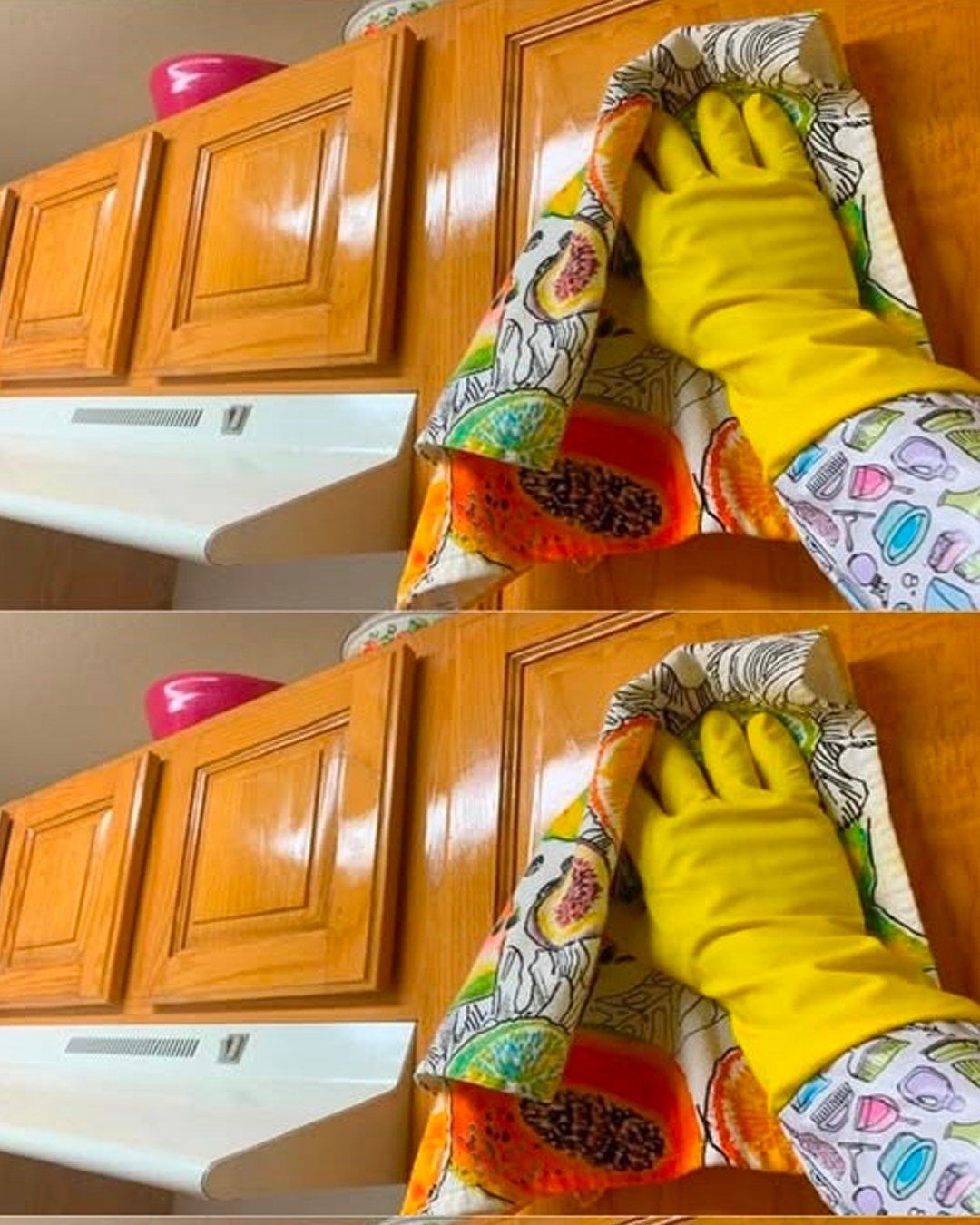ADVERTISEMENT
#### 2. **Prep Your Surfaces**
Before applying any cleaning solution, ensure the surfaces are prepped and ready to clean. This includes removing any items or clutter from countertops, stovetops, or furniture. For cabinets and drawers, remove any items inside so you can clean all accessible surfaces.
If you’re cleaning kitchen furniture that has a heavy buildup of grease, it might be a good idea to wipe down the surface with a dry microfiber cloth to remove any loose dust or dirt before applying a cleaning solution. This ensures that the grease doesn’t mix with dirt and become more difficult to clean.
#### 3. **Create a Grease-Cutting Cleaning Solution**
Now that your surfaces are prepped, it’s time to create a cleaning solution. One of the best DIY tricks for cleaning grease is using a mixture of dish soap, baking soda, and vinegar.
**DIY Grease-Cutting Solution:**
– 1 tablespoon of dish soap
– 1/2 cup of baking soda
– 1 cup of warm water
– 1/4 cup of white vinegar
Mix these ingredients in a spray bottle or a small bucket. The dish soap helps break down grease, while baking soda acts as an abrasive to lift grease. Vinegar is a natural degreaser and disinfectant that will help dissolve the grease.
#### 4. **Spray the Solution on Grease Deposits**
Using the spray bottle, generously spray the cleaning solution onto the grease-covered surfaces. Make sure to coat the greasy areas evenly. Allow the solution to sit for 5 to 10 minutes. This gives the cleaning solution time to break down the grease, making it easier to remove.
If you’re cleaning a heavily greasy area, you can also sprinkle a bit of extra baking soda directly on the surface. The combination of baking soda and vinegar will cause a mild fizzing action that helps lift grime.
#### 5. **Scrub the Grease Away**
After the cleaning solution has had time to sit, grab your scrub brush or sponge. Gently scrub the surface in a circular motion to lift the grease. For stubborn grease spots, apply a bit more pressure, but be sure not to damage the surface.
For cabinets or wood furniture, use a soft, non-abrasive sponge to avoid scratching the wood. For glass or stainless steel surfaces, a microfiber cloth works well to scrub and buff the grease away without leaving streaks.
#### 6. **Wipe the Surface Clean**
After scrubbing, use a clean microfiber cloth to wipe the surface and remove any leftover cleaning solution. If there’s any residue, dip the cloth in warm water, wring it out, and wipe the surface again to remove any remaining solution.
You can repeat the process if you notice any grease still lingering. Just be sure to wipe thoroughly to avoid leaving watermarks or streaks.
#### 7. **Restore Shine (Optional)**
Once your furniture is clean and free of grease, consider adding a finishing touch to restore the shine to wood surfaces. For wooden cabinets or countertops, apply a small amount of olive oil or baby oil onto a clean cloth and gently buff the wood to restore its luster. This not only brings back the shine but also helps protect the surface from future grease buildup.
#### 8. **Regular Maintenance**
To keep grease buildup at bay, make regular cleaning a habit. Wipe down kitchen furniture weekly or bi-weekly, depending on your cooking habits, to prevent grease from accumulating. Consider using a grease-resistant spray on cabinets or countertops to make future cleanups easier.
### Additional Tips for Cleaning Different Types of Kitchen Furniture
While the above steps are effective for most kitchen furniture, here are some additional tips for specific surfaces:
– **Stainless Steel Surfaces**: To clean grease from stainless steel, make sure you use a soft cloth to avoid scratching the surface. A mixture of vinegar and water works wonders for stainless steel, but always dry the surface thoroughly afterward to prevent water spots.
– **Wooden Cabinets**: Wooden furniture requires extra care. Avoid soaking wood with cleaning solutions. Instead, dampen a cloth with the cleaning solution and wipe gently. Always dry wood surfaces immediately to avoid water damage.
– **Glass Surfaces**: Grease on glass can be tackled with a mixture of dish soap and water, followed by a vinegar rinse. For extra shine, buff with a clean microfiber cloth.
– **Granite and Marble**: For granite or marble surfaces, avoid using vinegar, as it can damage the stone. Instead, opt for a gentle dish soap solution or a stone cleaner to lift grease.
### Conclusion
Cleaning grease from kitchen furniture may seem like a difficult task, but with the right tools and methods, it becomes effortless. By using natural ingredients like dish soap, baking soda, and vinegar, you can remove stubborn grease deposits without harsh chemicals. Regular maintenance is the key to keeping your kitchen furniture looking clean and polished.
The foolproof trick to cleaning grease is not just about the solution you use, but also about consistency. If you stay on top of regular cleaning, you’ll minimize grease buildup and maintain a fresh, inviting kitchen. Whether you’re dealing with greasy cabinets, countertops, or other furniture, these simple, effective cleaning techniques will help you keep your kitchen looking its best for years to come.
